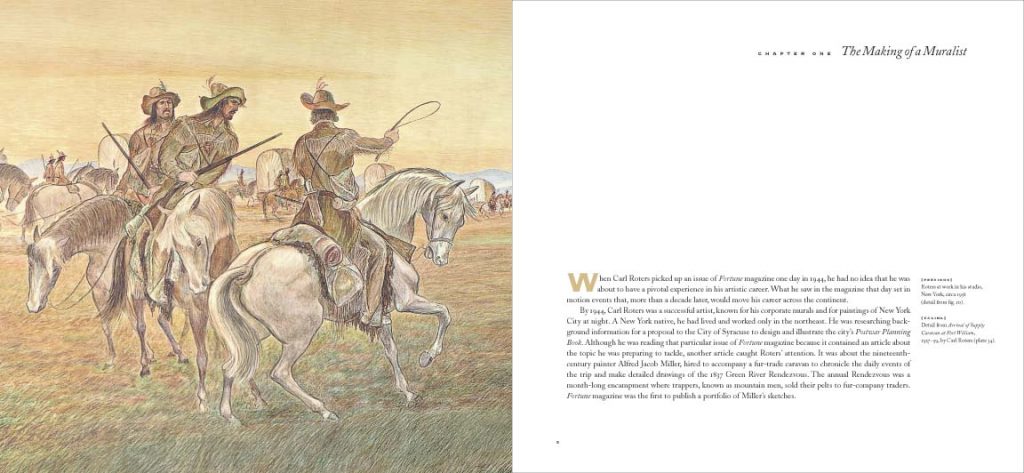
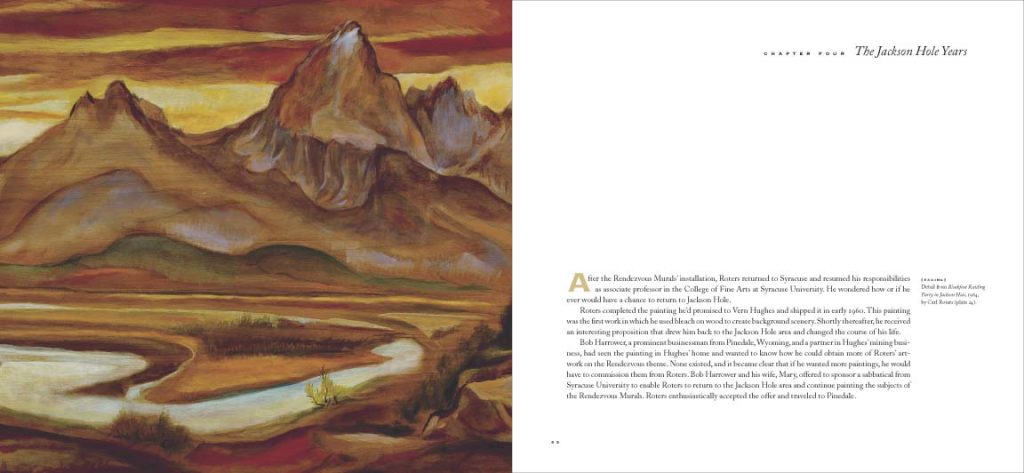
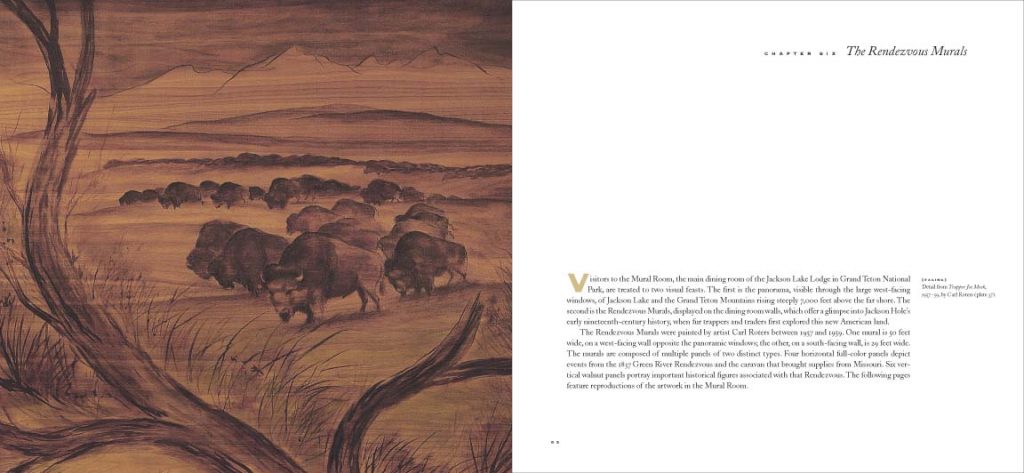
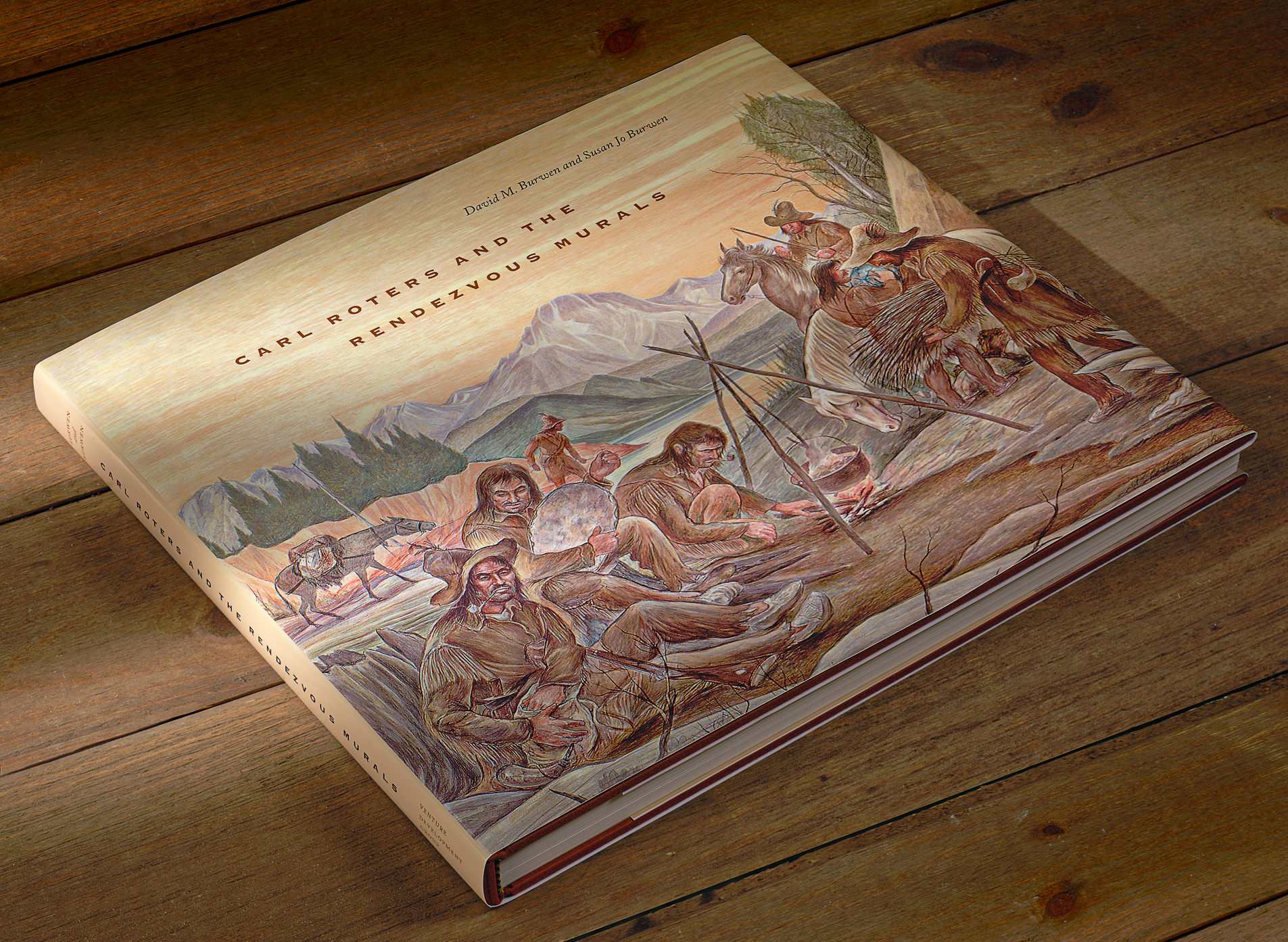
This museum-quality book is lavishly illustrated with reproductions of the Murals and many paintings by Carl Roters beyond those shown on this website. His vibrant images, created with innovative media and techniques, are published here for the first time.
Part One: Carl Roters
Part Two: The Rendezvous Murals
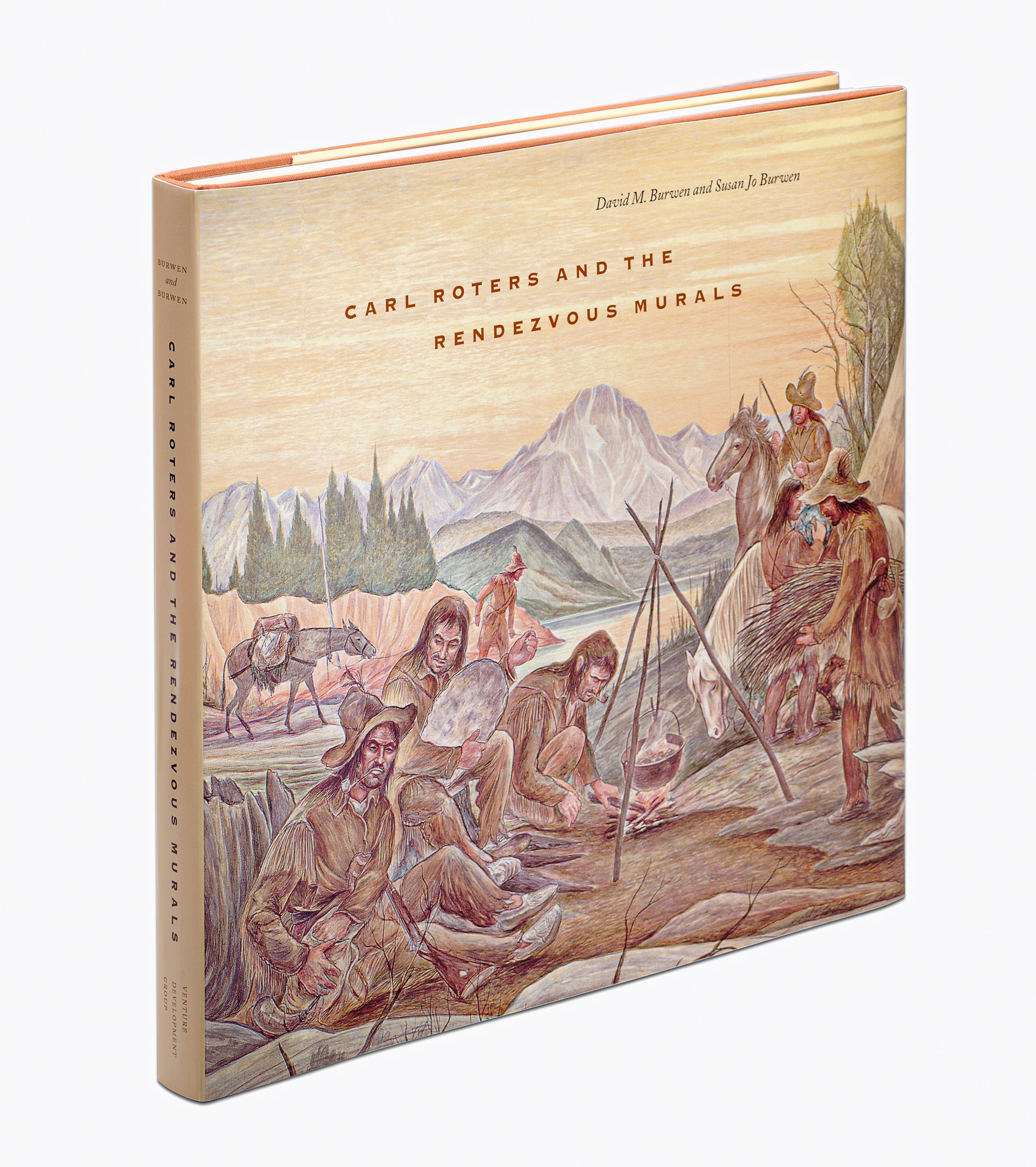

Chapter One
The Making of a Muralist
When Carl Roters picked up an issue of Fortune magazine one day in 1944, he had no idea that he was about to have a pivotal experience in his artistic career. What he saw in the magazine that day set in motion events that, more than a decade later, would move his career across the continent.
By 1944, Carl Roters was a succcessful artist, known for his corporate murals and for paintings of New York City at night. A New York native, he had lived and worked only in the northeast. He was researching background information for a proposal to the City of Syracuse to design and illustrate the city’s Postwar Planning Book. Although he was reading that particular issue of Fortune magazine because it contained an article about the topic he was preparing to tackle, another article caught Roter’s attention. It was about the nineteenth-century painter Alfred Jacob Miller, hired to accompany a fur-trade caravan to chronicle the daily events of the trip and make detailed drawings of the 1837 Green River Rendezvous. The annual Rendezvous was a month-long encampment where trappers, known as mountain men, sold their pelts to fur-company traders. Fortune magazine was the first to publish a portfolio of Miller’s sketches.
Chapter Two
The Competition
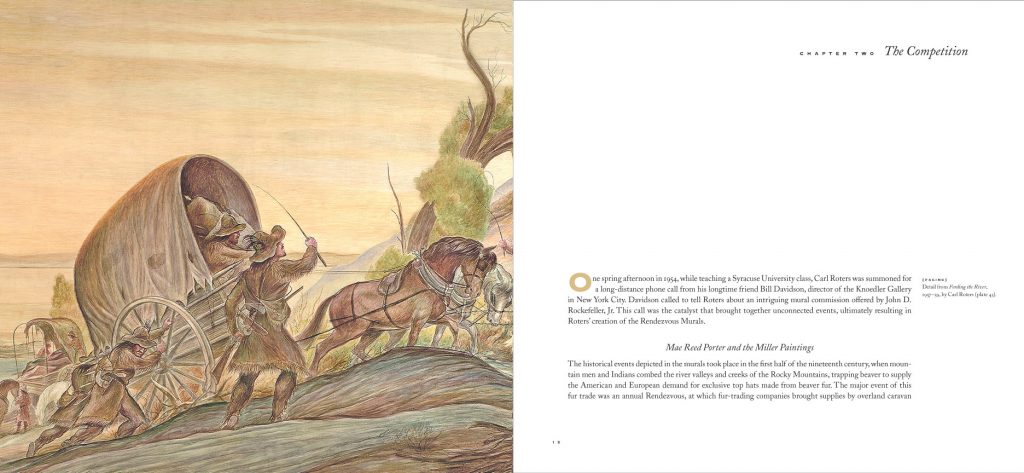
One spring afternoon in 1954, while teaching a Syracuse University Class, Carl Roters was summoned for a long-distance phone call from his longtime friend Bill Davidson, director of the Knoedler Gallery in New York City. Davidson called to tell Roters about an intriguing mural commission offered by John D. Rockefeller, Jr. This call was the catalyst that brought together unconnected events, ultimately resulting in Roters’ creation of the Rendezvous Murals.
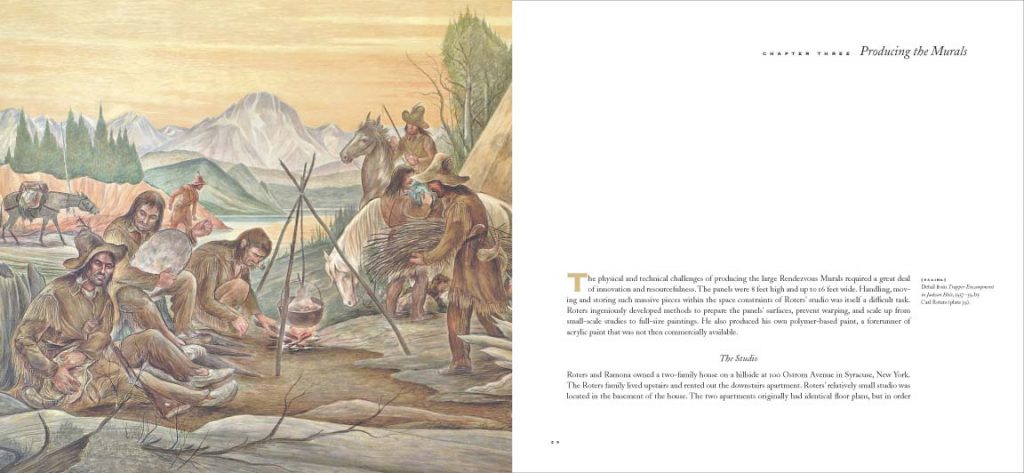
Chapter Three
Producing The Materials
The physical and technical challenges of producing the large Rendezvous Murals required a great deal of innovation and resourcefulness.
The panels were 8 feet high and up to 16 feet wide. Handling, moving, and storing such massive pieces within the space constraints of Roters’ studio was itself a difficult task. Roters ingeniously developed methods to prepare the panels’ surfaces, prevent warping, and scale up from small-scale studies to full-size paintings. He also produced his own polymer-based paint, a forerunner of acrylic paint that was not then commercially available.
Chapter Four
Producing The Materials

After the Rendezvous Murals’ installation, Roters returned to Syracuse and resumed his responsibilities as associate professor in the College of Fine Arts at Syracuse University. He wondered how or if he ever would have a chance to return to Jackson Hole.
Roters completed the painting he’d promised to Vern Hughes and shipped it in early 1960. This painting was the first work in which he used bleach on wood to create background scenery. Shortly thereafter, he received an interesting proposition that drew him back to the Jackson Hole area and changed the course of his life.
Bob Harrower, a prominent businessman from Pinedale, Wyoming, and a partner in Hughes’ mining business, had seen the painting in Hughes’ home and wanted to know how he could obtain more of Roters’ artwork on the Rendezvous theme. None existed, and it became clear that if he wanted more paintings he would have to commission them from Roters. Bob Harrower and his wife, Mary, offered to sponsor a sabbatical from Syracuse University to enable Roters to return to the Jackson Hole area and continue painting the subjects of the Rendezvous Murals. Roters enthusiastically accepted the offer and traveled to Pinedale.
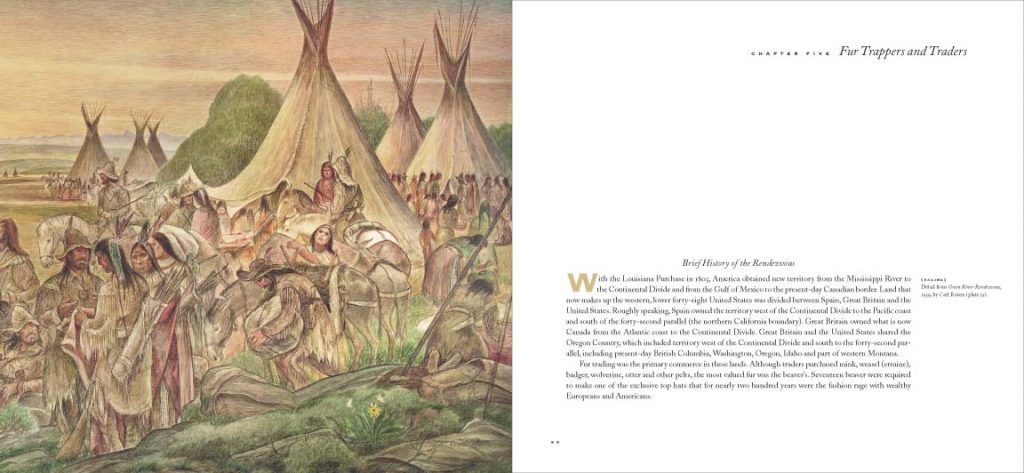
Chapter Five
Fur Trappers and Traders
With the Louisiana Purchase in 1803, America obtained new territory from the Mississippi River to the Continental Divide and from the Gulf of Mexico to the present-day Canadian border. Land that now makes up the western, lower forty-eight United States was divided between Spain, Great Britain, and the United States. Roughly speaking, Spain owned the territory west of the Continental Divide to the Pacific coast and south of the forty-second parallel (the northern California boundary). Great Britain owned what is now Canada from the Atlantic coast to the Continental Divide. Great Britain and the United States shared the Oregon Country, which included territory west of the Continental Divide and south to the forty-second parallel, including present-day British Columbia, Washington, Oregon, Idaho, and part of western Montana.
Fur trading was the primary commerce in these lands. Although traders purchased mink, weasel (ermine), badger, wolverine, otter and other pelts, the most valued fur was the beaver’s. Seventeen beaver were required to make one of the exclusive top hats that for nearly two hundred years were the fashion rage of wealthy Europeans and Americans.
Chapter Six
The Rendezvous Murals

The Rendezvous Murals were painted by artist Carl Roters between 1957 and 1959. One mural is 50 feet wide, on a west-facing wall opposite the panoramic windows; the other, on a south-facing wall, is 29 feet wide. The murals are composed of multiple panels of two distinct types. Four horizontal full-color panels depict events from 1837 Green River Rendezvous and the caravan that brought supplies from Missouri. Six vertical walnut panels portray important historical figures associated with that Rendezvous. The following pages feature reproductions of the artowork in the Mural Room.


